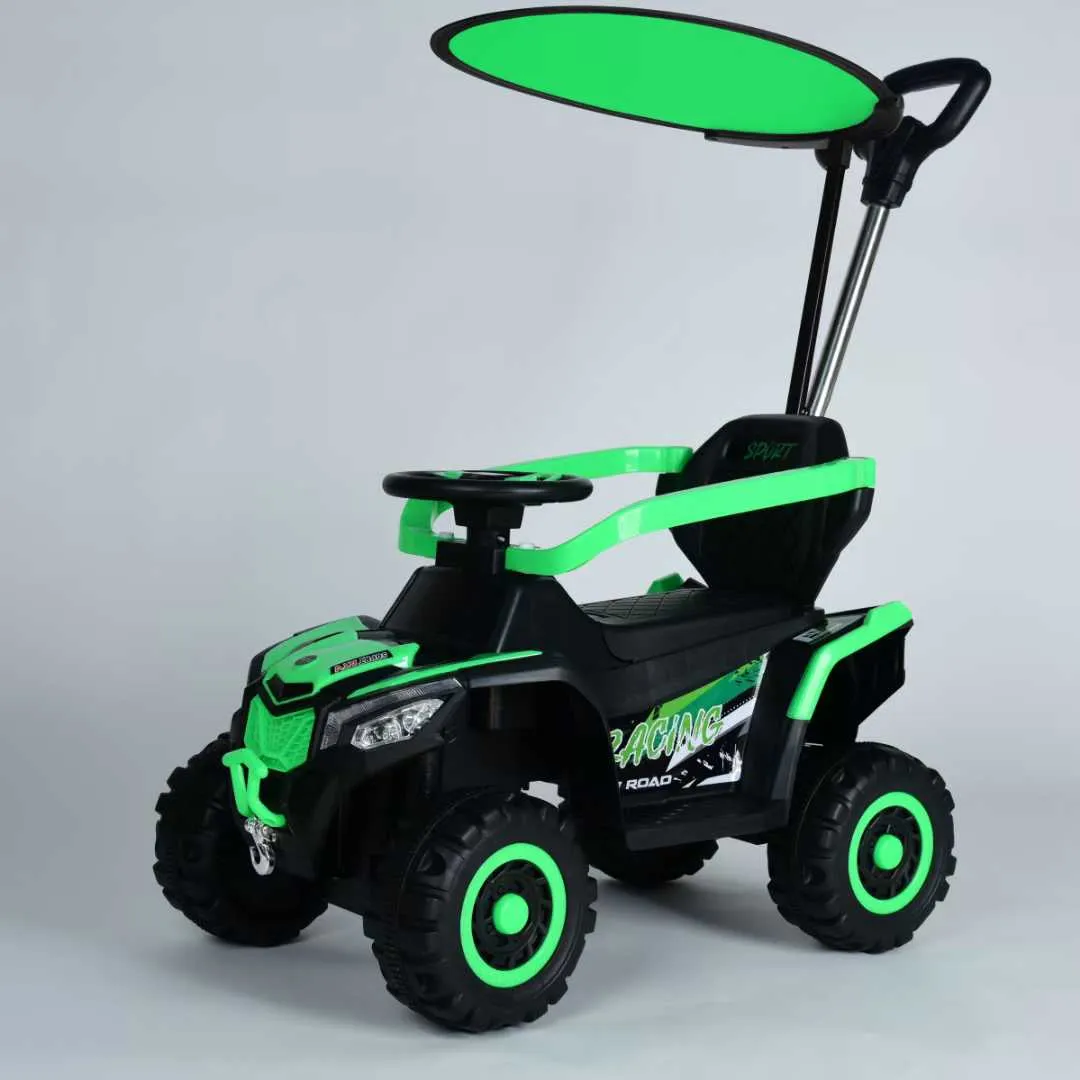Sustainability Practices in the Production of Ride-On Push Cars
As parents and guardians become more eco-conscious, the demand for sustainable toys, including baby ride-on push cars, has grown significantly. These delightful toys provide essential developmental benefits for infants and toddlers, but how sustainable are they in terms of materials, production, and environmental impact? This article analyzes the sustainability practices in the manufacturing of double ride-on push cars, infant ride-on push cars, and manual push ride-on cars, as well as their environmental footprint.

Material Choices of Ride-on Push Toy Car: Opting for Eco-Friendly Components
A crucial aspect of sustainability in the production of ride-on push cars is the materials used. Many manufacturers have shifted towards using eco-friendly plastics or recycled materials in the creation of baby ride-on push cars. These materials reduce the need for new raw resources, thus decreasing the environmental footprint of manufacturing. Additionally, recycled plastic can be used for the car's frame, wheels, and even small components, ensuring that the toys are not only durable but also kinder to the planet.
In the case of double ride-on push cars, manufacturers are increasingly incorporating natural materials, such as bamboo, to replace harmful plastics in certain parts of the construction. Bamboo is a fast-growing, renewable resource, making it an excellent choice for environmentally conscious companies. For manual push ride-on cars, the trend is toward minimizing the use of non-recyclable materials and increasing the use of biodegradable or renewable alternatives.
Energy-Efficient Production Processes of Ride-on Push Toy Car
The environmental impact of manufacturing infant ride-on push cars goes beyond the materials themselves. Energy consumption during the production process plays a significant role in the carbon footprint. Several companies are now investing in energy-efficient machinery and utilizing renewable energy sources like solar power or wind energy to reduce their carbon emissions. This practice not only minimizes energy waste but also helps companies meet sustainability goals.
For double ride-on push cars and manual push ride-on cars, manufacturers are embracing lean production techniques that reduce waste during the manufacturing process. By adopting more efficient assembly lines and refining material use, companies can cut down on waste and excess production costs, ultimately reducing the overall environmental footprint.
Another area where sustainability can be enhanced is in packaging and transportation. Many ride-on push car manufacturers are opting for minimalistic packaging, reducing the use of plastic and foam, which can contribute to landfill waste. Instead, companies are using recyclable cardboard and paper to package products.
Additionally, companies are focusing on optimizing shipping practices by choosing eco-friendly carriers that use electric or hybrid vehicles. This move significantly reduces emissions from transporting baby ride-on push cars globally, particularly for international sales. Infant ride-on push cars often require careful packaging for safe transit, and companies are working on designing packaging that minimizes material usage while providing adequate protection during shipping.
Product Durability and Longevity of Ride-on Push Toy Car
One of the most sustainable practices in the production of ride-on push cars is ensuring that the toys are built to last. Double ride-on push cars and manual push ride-on cars are designed with durability in mind, ensuring that they can withstand the wear and tear of active play over an extended period. This approach reduces the need for frequent replacements and minimizes waste.
High-quality infant ride-on push cars are often constructed with materials and components that can handle rough treatment and multiple generations of use, making them perfect for hand-me-downs or secondhand sales. The longer these toys last, the less frequently they need to be replaced, contributing to a reduction in overall waste.
End-of-Life Disposal of Ride-on Push Toy Car: Recycling and Reusability
What happens to ride-on push cars once their useful life has ended? Sustainability is not just about the production process—it extends to the end-of-life stage as well. To reduce landfill waste, many manufacturers are making efforts to design products that are easily recyclable. For example, plastic components can often be broken down and reused in future products, and metals can be melted down and repurposed for other manufacturing purposes.
Incorporating recyclable materials and promoting product take-back programs where consumers can return their manual push ride-on cars or baby ride-on push cars for recycling is a growing trend in the industry. Companies are also encouraging the resale of used ride-on push cars through second-hand markets, contributing to a more circular economy.
Embracing Sustainability in Ride-On Push Car Production
As parents and manufacturers alike continue to prioritize sustainability, the production of ride-on push cars is shifting toward eco-friendly practices. From the use of recyclable materials in the construction of double ride-on push cars and manual push ride-on cars to energy-efficient production processes and eco-friendly packaging, the ride-on toy industry is gradually reducing its environmental impact.
By choosing sustainable infant ride-on push cars and supporting brands that prioritize eco-friendly manufacturing, consumers can make a positive contribution to the planet. If you're looking for a product that's both fun and environmentally conscious, consider investing in a ride-on push toy car that reflects these sustainable practices.
-
The Perfect Ride for Early Development: Discover the Best Kids Balance BikesНовиниJun.11,2025
-
Ride in Style: Why Every Child Needs a Reliable Kids ScooterНовиниJun.11,2025
-
Joy in Every Ride: Why a Kids Tricycle Is the Ultimate First VehicleНовиниJun.11,2025
-
Glide into Joyful Motion with the Innovative Swing CarНовиниJun.11,2025
-
Explore the Perfect Baby Walker for Your Little One’s First StepsНовиниJun.11,2025
-
Engineered for Fun: Premium Kids Motorcycles for Sale That Deliver Safety and ThrillНовиниJun.11,2025
